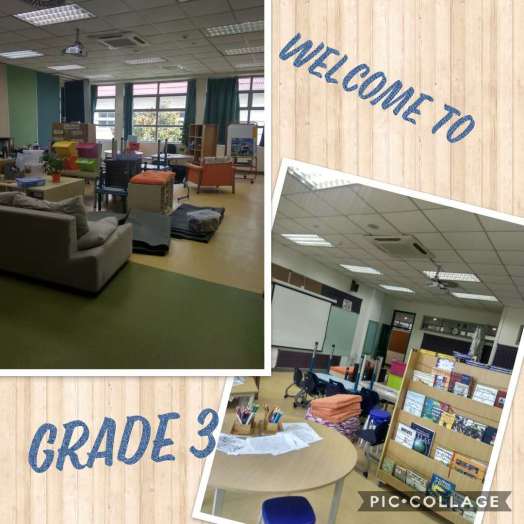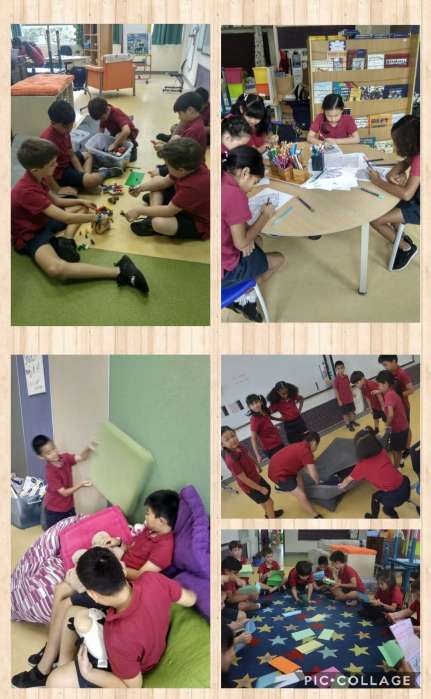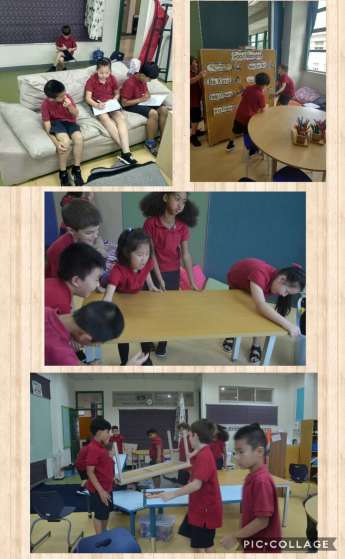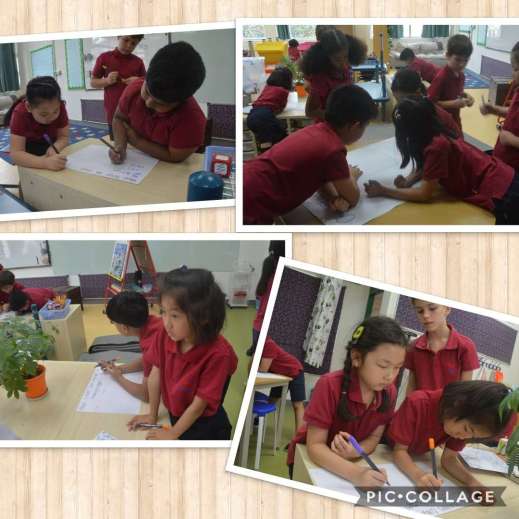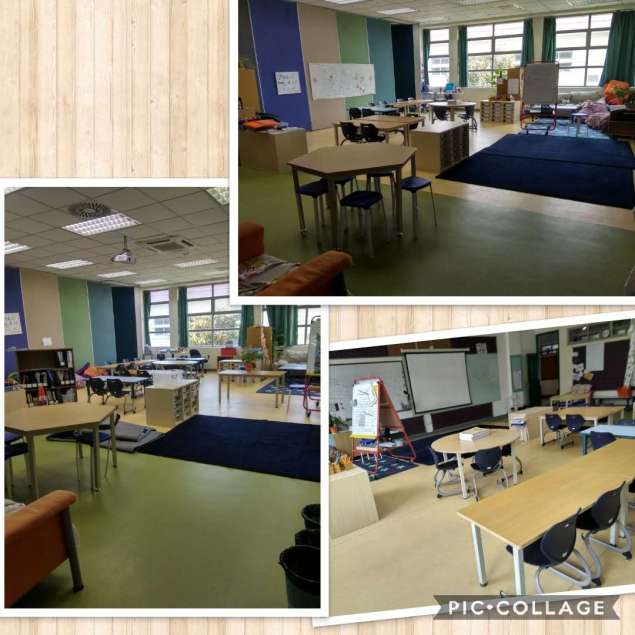So our class blogs are up and running (there was a slight hiccup at the beginning of the year), so its time to ask the questions What is a blog? Why do we blog? and How do we write a comment? of my grade 3 class.
The week of learning about (or reconfirming) blogging and commenting began with me asking the class to fill in a few survey questions as they entered the room.
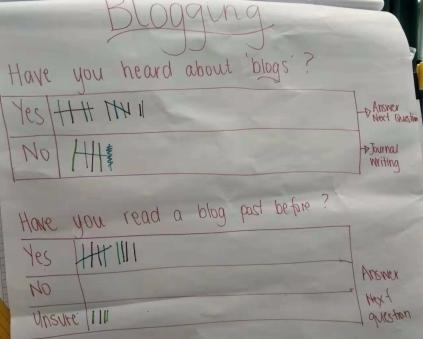
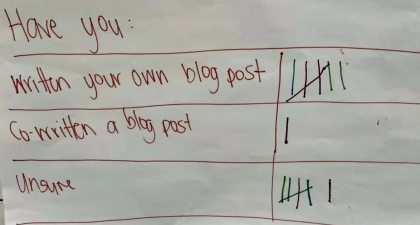
It was interesting to see the number of students who didn’t know or have a clear idea of:
- what a blog was, or a misconception about them
- didn’t understand the purpose of them
- hadn’t created one (co-constructed one) or commented on one as I only have 3 new students and a large number have been at the school for a few years. (this actually reconfirmed my plan to break it down and look at the topic closely was a good one)
I was also glad to see that across the class there was some ideas and thoughts connected with the concept of blogging and why we have them.
Following on from this data collecting over the next day or so I asked the students to fill a post-it note as an entry-in or exit-slip with a different question prompt.
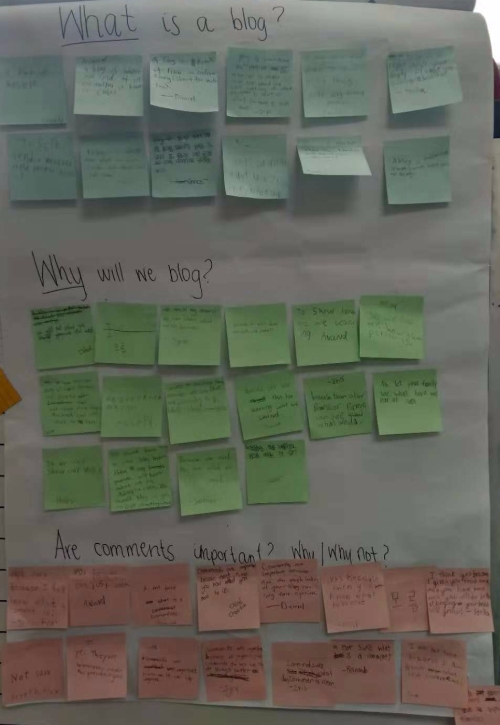
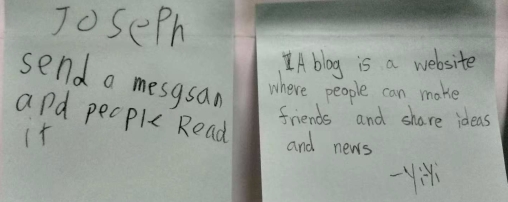
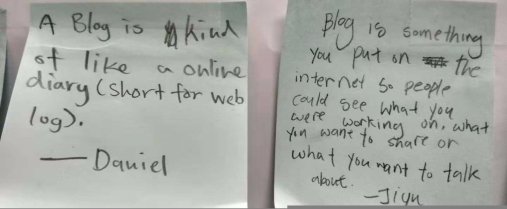

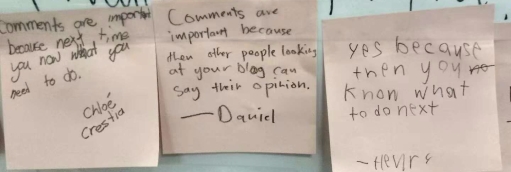
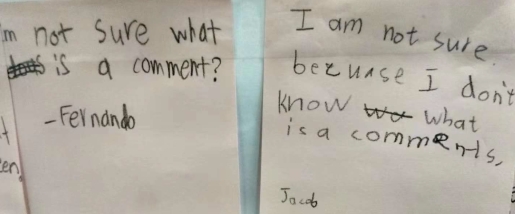
It was also great to see those who did have some knowledge, understanding and skills about blogging and commenting. I found out one of my students had her own cooking blog she keeps, but sadly she thought it didn’t count because it was in Korean. She now knows better.
So after these few days gathering thinking and knowledge what next?
- We needed to come up with a clear definition we all understood a blog was, and our class purpose for one.
- Have a talk about ‘online’, digital footprints and safety. We had previously discussed password work safety when issuing our Raz-kids accounts (something they had all had but had not discussed ‘password safety’ before), and our new typing passwords.
- Look at what makes a good piece of writing for a blog post- comparing this to our writing cycle
- What is a comment, why they are important and how do we write a good comment
- Design a class poster/ guidelines for blogging and commenting that will help us throughout the year.
We discussed our free-write journal books and what they are for and how they are shared. These are for ourselves and only those who we want to share it with. These are our thoughts, wonderings, fun stories and have-go-pages. We compared this with “…a kind of on-line diary’ (part of Daniel’s definition). We realised that anybody could read this diary/journal pieces so the writing and pictures need to be edited, finished, connected and personal information or silly words should be left out.
As a class blog, it needs to remain on topic of school. We can only talk about our side of school things if it is connected to our learning.
We then watched and made notes from How to write a quality comment by Linda Yollis. We combined these with what we know about the writing cycle and had learnt about digital footprints and online privacy to make out guidelines. At first these were all in the negative so I took the opportunity to help change them to the positive. ‘Like our class aggreements’ as one student reminded us/ remembered.
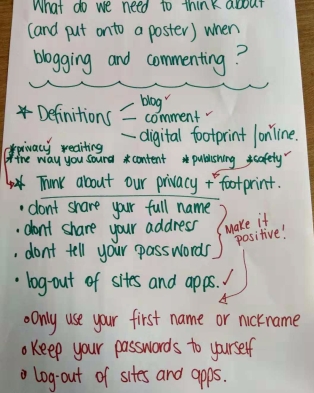
Here are our full agreements that will be displayed and referred to in our class (and as suggested by a student, will be posted on our blog). Much of this has also been covered and worked on during the creation of our writing cycle poster, so while it looks like a lot much of it is not new to the students.
Blogging in 3TS
Blogs are pieces of writing, pictures or videos you share on the internet that everyone can see. We will be blogging about, sharing, reflecting and commenting on our learning, thinking and challenges in grade 3.
We all leave footprints where ever we have been, and this happens online (on the internet) too.
We are all responsible for writing and posting, commenting and replying. So how do we do this well?
To keep our digital footprints clean and not having a negative impact and to be safe we need to:
~ only use our or friends first name or nickname
~ keep our passwords to yourself
~ log-out of sites and apps
~ use and share nice words and pictures
Think about the way you sound or look (tone/ word choices/ picture choices):
~ use kind/ nice words
~ instead of !!!! use more words
~ all capital letters = SHOUTING
~ be respectful and polite
~ you can disagree with someone, but don’t say they are wrong, explain your opinion.
What does your work look like? (content):
~ always proofread and edit before publishing- spelling, capitals, punctuation
~ does it make sense? Not sure ask someone else to read it first.
How to write a good comment:
~ introduce your self
~ compliment the writer- say something you liked about their piece
~ tell them some more information or details if you know it
~ share a wondering or ask a question ( get the conversation happening)
~ stay on topic
~ remember to be safe online (privacy)
Ready to publish?
~ conference with Ms Tracy
~ press publish, submit, send or reply
~ Remeber to check back on your post/ comment and see if you have had a reply. If you have, reply using the same guidelines.
Our final lesson of the week was to learn how the students will be blogging for themselves. I told them that there is now an expectation that they will be blogging about their learning, interests, WOW and challenges. They will be using the conferencing stage of the writing cycle to work with me prior to posting so we put our best selves out there online. I will not be taking away student-voice but helping them make smart word, detail and picture choices.
I connected an Ipad to the display screen to demonstrate how to use Easy Blog Jr. I selected a student who a few moments ago had asked a great wondering question about the measurement lesson we had just completed and wrote a post about it as if I was him. After writing it I asked Jacob if I could post it under his name with an added sentence saying it was me who wrote this blog. He said yes and the class constructed this sentence: ‘Miss Tracy wrote this to show the class how to make a blog post. The wondering was really Jacobs.’ I then showed the class the next step to publishing it. If Jacob had said no that would have been ok. I would have shown the next 2 screens but not hit the final publish button.
So what next?
- As I did not have time to look at other types of bogs that are created and read this will be part of next weeks reading lessons.
- Have students begin to blog for the first time and to do this I will build a rotation into lessons to begin with. When they are confident they will be able to self-select blogging times/ opportunities (agency). Also to ensure all students get involved there will be reminders, time built into rotation choices and requests throughout the year (responsibility and learning opportunities).
- Share our guidelines with the parents on the blog and encourage them to comment using it.
- Build in opportunities to not only blog when they feel the need to (agency), but to go back through and look at and respond to comments or find a post they enjoyed and write a comment on that.
- Later in the year the students will also move beyond our own class blog and look at other classes to read for ideas and to comment on.
3TS are ready to take on the challenge and online world with their knowledge and growing skills as bloggers!
